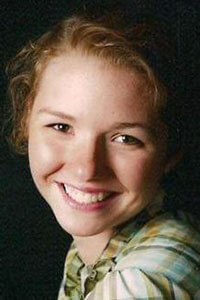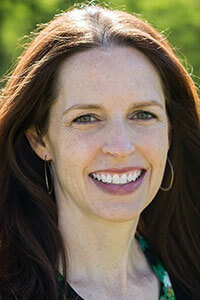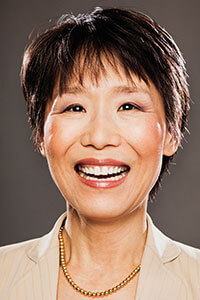
The COVID-19 pandemic forced business event planners to swiftly move canceled face-to-face events online, changing the digital event landscape forever. (Illustrations by Celyn Brazier)
In March, despite the fact that the Professional Dairy Producers of Wisconsin (PDPW) had never before offered an online education component to their annual meeting, the association converted a face-to-face meeting to a virtual one in just seven days.
It was a move made out of sheer necessity, following the World Health Organization’s classification of COVID-19 as a pandemic and a cascade of travel restrictions, Cassandra Strupp, PDPW’s program manager told Convene. The meeting — which draws dairy farmers, veterinarians, industry representatives, and academics — is “the whole reason the association exists,” said Strupp, whose team worked with the Madison, Wisconsin–based video-streaming company, Mediasite, to produce the virtual event. “In all honesty,” she added, “canceling wasn’t an option.”

Cassandra Strupp
So, in an adrenaline-fueled pivot, PDPW and Mediasite moved all of its education content online, offering members a choice of watching sessions broadcast during the conference’s scheduled dates, or later on demand. PDPW also offered a sponsor showcase, which already had been planned.
The event’s success was a revelation to Strupp. PDPW calculated that the virtual event had doubled the conference’s attendance compared with previous years, and increased its geographic reach — Strupp heard reports of members who watched educational sessions in their dairy barns, she said. Sponsors, too, were happy with the results.
PDPW had long tiptoed around the idea of adding virtual, Strupp said, but “every year, we would say, ‘This just isn’t the time.’” But she and her team were so impressed by the results of the virtual event that they intend to include virtual elements to their future live events, she said. This was the year, Strupp said, “we ripped the Band-Aid off.”
This is likely to be that year for scores of meeting professionals: When Convene surveyed planners in early April, an overwhelming majority — 70 percent — said that they had moved or planned to move some or all of their content to digital platforms. And for many, like Strupp, it will be a new experience — in a separate PCMA survey of 54 medical meeting planners conducted in late April, nearly seven out of 10 said they had never before offered virtual options at their events.
No one would ever wish for a wide-scale adoption of digital meetings to come at the devastating cost of a pandemic, which has taken the lives of hundreds of thousands and caused scores of meeting professionals to lose jobs and income. For Emily Catanzaro, CMP, senior director of meeting services at the American Thoracic Society (ATS), the economic fallout of the pandemic has been the most painful part of the crisis. In the past, producing conferences alongside vendors with whom she shared long-standing relationships made her feel “like you’re going into a war and you have your soldiers with you,” she said. “Knowing that part of your team, that you consider family, that right now they don’t have work — that’s been the hardest thing for me.”
But there are opportunities within the crisis, for now and for when the safety of meeting and traveling becomes reestablished, say those who are experienced with designing digital events. Victoria Fanning, CMP, DES, senior manager for online events with MGMA, the Medical Group Management Association, has worked in the digital meeting space, producing online content, since 2009. She said she’s “the last person” who would want to cancel a face-to-face event — she began her career planning them. But as planners turn to digital platforms to help them deliver on the educational and business goals of their organization, they also will develop their knowledge of how digital content “can be of great use in broadening your reach and your brand awareness,” Fanning said.
“There is going to be an increase in understanding about how virtual events can be really powerful, and how they can work,” both on their own and as part of face-to-face events.
Less Panic, More Design Strategy
For those who have recently converted long-planned face-to-face meetings into completely digital ones under extreme time constraints, technology, by necessity, has taken center stage. But as planners consider the role that digital will play in meetings scheduled later this year and beyond, there is a shift toward thinking more strategically and over the longer term about digital events.

Victoria Fanning
Eleven years ago, when she began planning digital events, it was “incredibly beneficial” that she was tech savvy and knew how to code and ask the right technical questions, Fanning said. But over the years, her technical proficiency has become less important as both technology and suppliers have evolved — along with an expanding array of technology solutions designed for nearly every meeting objective. “Companies are much more sophisticated now — they know what you need,” Fanning said. “They are really terrific partners who are significantly more helpful now than they have ever been.”
But strategic challenges have become more pressing, especially as the uncertainty around safety and travel restrictions created by the pandemic continues. Many planners find themselves, like Fanning, in a position of needing to create digital meeting scenarios that are flexible and comprehensive enough to adapt to a wide array of possible circumstances in the coming months. For MGMA’s Medical Practices Excellence Conference, scheduled for Oct. 18–21 in San Antonio, Texas, Fanning is planning a virtual registration option — as MGMA has for the last three years — but she and her team also are creating contingency plans for an all-virtual meeting should more of the meeting’s components need to be moved online. Start early, Fanning advises planners, to devise a range of strategies to fit different possible scenarios. “You won’t have that panic-driven moment,” she said, “because you’ll have planned for it.”
 One Schedule Does Not Fit All
One Schedule Does Not Fit All
ATS has never before offered digital meetings, Catanzaro told Convene, although the organization has previously offered livestreaming options for some of the annual meeting’s topline sessions. “But the interest,” she said, “really wasn’t there.”

Emily Catanzaro
It’s a different world now. ATS’s global membership includes more than 16,000 physicians, research scientists, nurses, and other health-care workers in specialties that include pulmonary and infectious diseases — and many of them are in the frontlines battling COVID-19. When ATS made the decision in March to cancel its annual 2020 international meeting, scheduled to be held in May in Philadelphia, it sent out RFPs to technology companies for a virtual meeting that same week, Catanzaro said. “The purpose of the conference is to push out science, and we still want to do that.”
But given the extraordinary demands being placed on their members, instead of swiftly posting session content online to coincide with the original conference dates, May 15–20, ATS is postponing broadcasting sessions until later in the year, Catanzaro said.
And when the digital content — including 50 to 70 education sessions — launches in late summer, it won’t be all at once, Catanzaro said. “We know that the critical care doctors may just be coming up for air when we’re ready to launch. So, we’re going to put things in phases,” she said. “About 95 percent of the content will be on demand,” she said. ATS members “really need that on-demand aspect because they may be in the hospital all evening or they may need to spend time with their families.”
ATS members are active on social media, particularly on Twitter, Catanzaro said, where members exchange information in Twitter chats. For the virtual event, ATS plans to add chat rooms clustered around specialties, where members can find one another and chat one on one, she said.
That last objective, designing member engagement into digital events, is one of the hottest topics currently being discussed in the online events world, Fanning said. Many digital events rely on livestreams — in a Convene survey, 62 percent of those planning digital events used them — but by themselves, they can feel “kind of like a window into an event,” Fanning said. “You may be looking at the speakers, but somebody else is asking questions for you — you’re at a remove.”
Planners can make meetings more interactive by adding facilitated breakouts that give attendees the opportunity to turn on their web cameras and have open dialogue with one another, Fanning said. She has included photo contests and trivia games to help attendees engage with one another, but she is not a fan of virtual happy hours. “I think they are hard to pull off,” she said. “I find that people most actively connect around content.”

Yeona Jang
Learning Curve
As planners invest in digital event design, the result could be that education is delivered in more effective and flexible ways — ones that don’t necessarily mirror the long days found in most face-to-face conference schedules.
“In adult learning, we’ve found that different people have different learning styles and different work schedules,” said Yeona Jang, chief community engagement officer for Explorance, a global software company based in Montreal. “Our strategy is not either/or — we combine in-person gatherings and virtual ones.”
Jang, who has a Ph.D. in computer science from MIT and an MBA from MIT Sloan School of Management, leads a team that designs webinars and face-to-face meetings, but she said she doesn’t define her job through those events.
“My team’s job is to help our customers learn together. We provide different ways of learning — some people do better face-to-face and some people do well with online learning.”
 An Explosion of Creativity
An Explosion of Creativity
As a digital event strategist, Fanning said it’s exciting for her to witness the new ways of thinking and the innovation that the recent turn to digital is creating. “There are a lot of different minds and a lot of different experiences,” she said, “that are coming together in new arena.”
Fanning said she sometimes fields questions about whether or not virtual events will cannibalize face-to-face events, although it surprises her that it is still a worry. (In Convene’s first COVID-19 survey, around one-quarter of respondents said that such a prospect concerns them.)
The last time there was a big move to digital, in 2009, meeting professionals had a lot of trepidation about the effect of virtual on face-to-face meetings, she said. “I don’t feel that kind of anxiety now, but I definitely hear anxiety around the question of ‘How is this going to change the future? Is virtual going to take over?’ And I just feel like it’s the same kind of thing as in 2009 — the bottom line is, if people have the money to attend face-to-face, they’re going to attend face-to-face. It’s just too important to have people together, and in per-son,” she said. “If there is a virtual component to a meeting, some people skip sessions just so they can network with people in the hallways.”
At ATS, Catanzaro doesn’t see an end to in-person meetings, but instead, a bright future for digital events at the society. The virtual program that ATS is planning “won’t replace the human connection and the networking that goes on between the scientists and our exhibitors and all of the attendees,” when they get together in person, Catanzaro said. But the digital conference they are rolling out this year isn’t a one-off, she said. “It is something that will only improve year after year.”
Barbara Palmer is Convene’s deputy editor.
Earn CMP Credit
Earn one clock hour of certification credit by visiting Convene‘s CMP series page to answer questions about information contained in the following articles.
- “Solving for Pricing, Sponsorships, and Skills Challenges When Going Digital”
- “The L&D Conference: An Online Event Built for Learning”
- “Students Getting ‘a Crash Course’ in Virtual Events”
- “Solving for Digital Event Pricing and Exhibitions”
- “Your Sensory Experience Is in the Mail”
- “5 Things Virtual Event Producers Can Learn From Jimmy Fallon”
The Certified Meeting Professional (CMP) is a registered trademark of the Events Industry Council.
